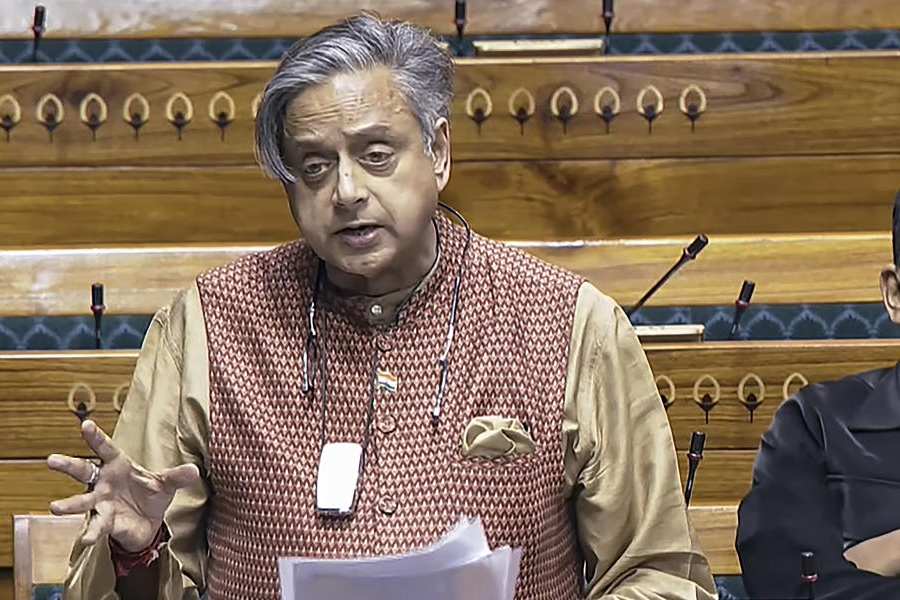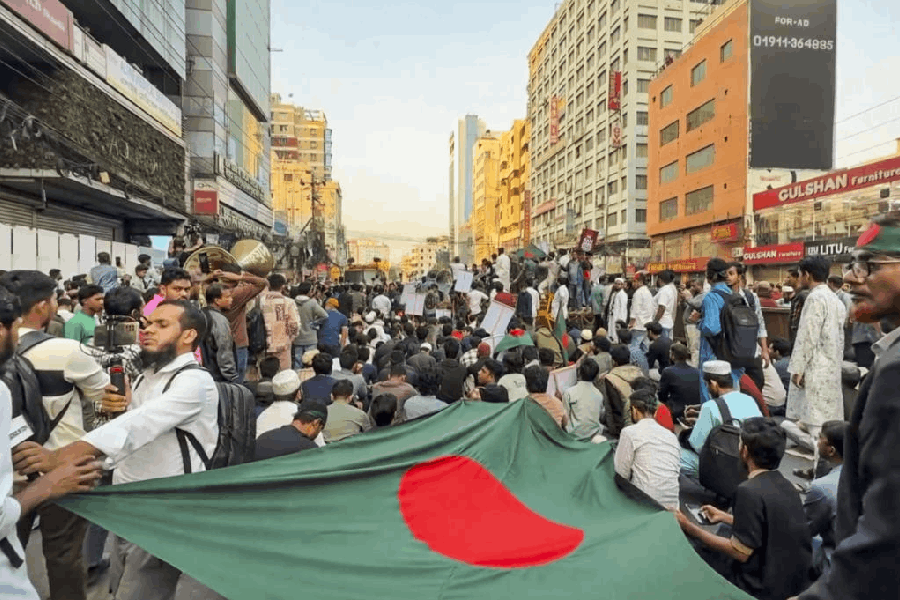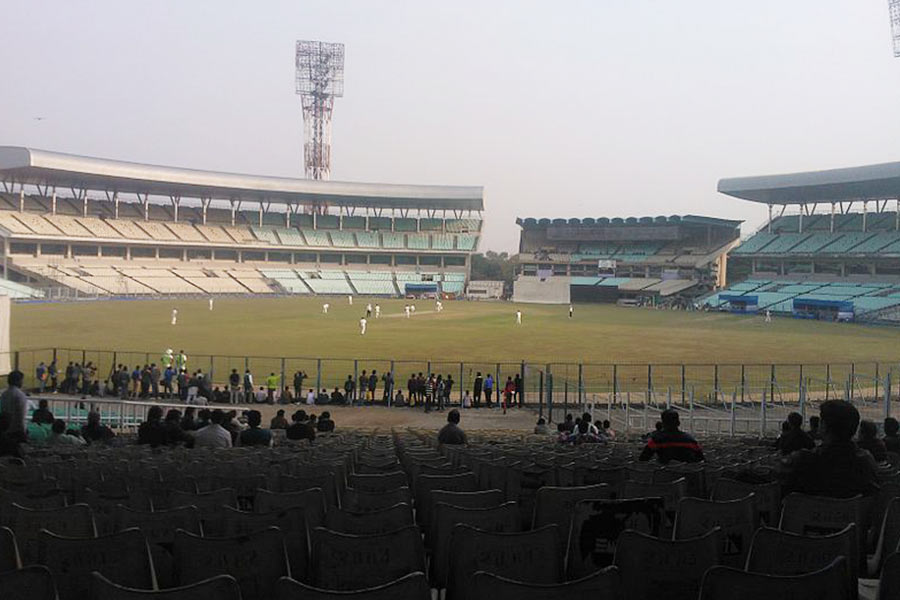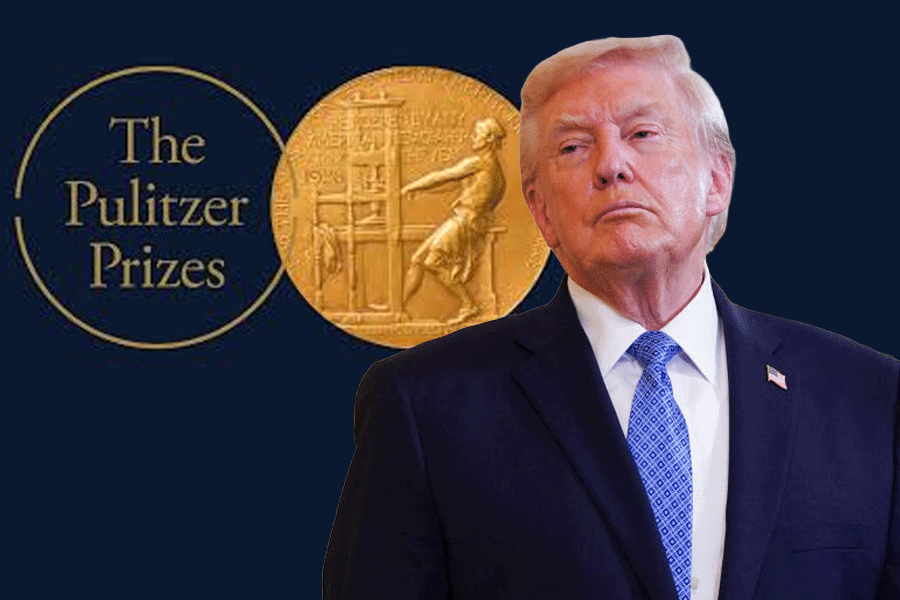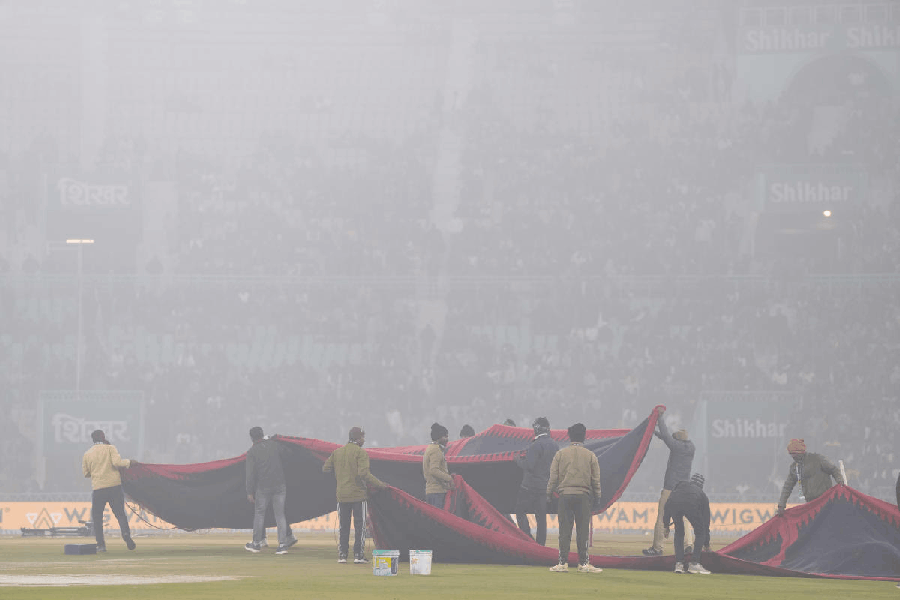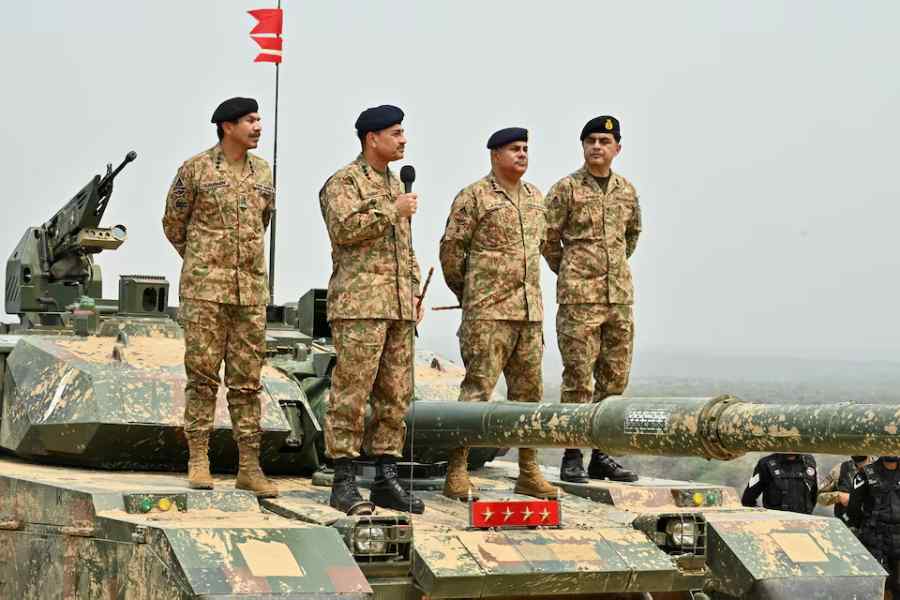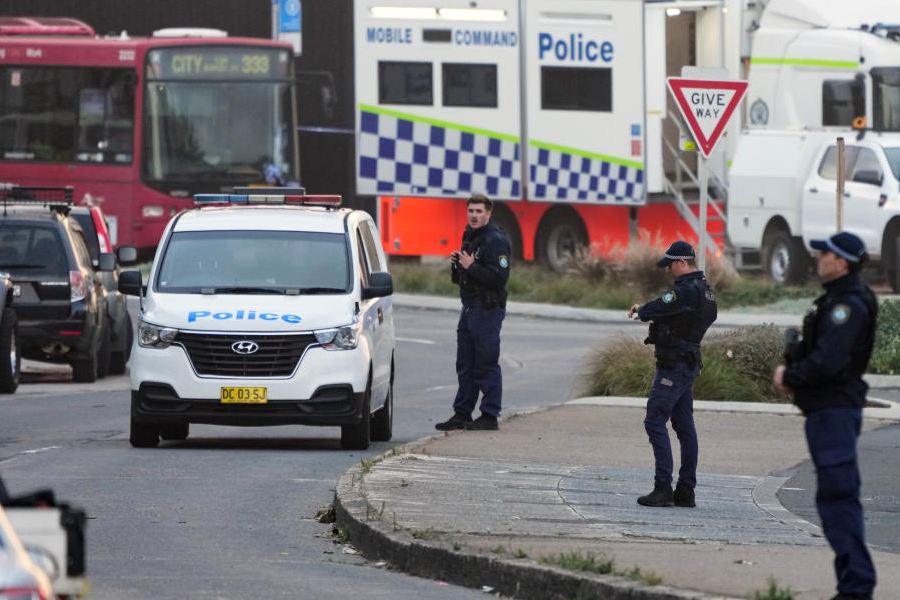True to its title, the exhibition, Friends in Frames: Photographs of Artists by Jyoti
Bhatt (Anil Relia Collection), on view at Tokaroun in Santiniketan till March 15, brings us face to face with various well-known practitioners, many of whom taught at Baroda’s M.S. University. They were caught at moments when they let their guard down. Such intimacy is only possible when the photographer and his subjects share a mutual trust. Most of these insightful photographs are in black-and-white, which is definitely Bhatt’s forte. These photographs were taken between 1960 and 2015
and are from the exhaustive collection of Anil Relia, an Ahmedabad-based
art entrepreneur.
Earlier, Bhatt had taken up his camera to document the vanishing culture of the tribals of Gujarat. Hierarchies that position artists above craftspeople and photographers do not exist for Bhatt. So he enjoyed a perfect communion with his fellow practitioners and folk artists. He is himself one of the most innovative photographers, artists and printmakers in this part of the world.
![M.F. Husain photographed by Jyoti Bhatt [Anil Relia/ Tokaroun]](https://assets.telegraphindia.com/telegraph/2025/Feb/1739577793_art2.jpg)
M.F. Husain photographed by Jyoti Bhatt [Anil Relia/ Tokaroun] Sourced by The Telegraph
Jyotindra Manshankar Bhatt was born in Bhavnagar in Gujarat in 1934. He went to a school where art and dance were taught in keeping with Rabindranath Tagore’s novel ideas about education. The editor of a Gujarati magazine published from Ahmedabad was associated with his school and Bhatt was familiar with the medium of photography from an early age. He studied painting at the Faculty of Fine Arts at M.S. University from 1950-56 and followed it up with training in fresco and mural painting in Rajasthan. For further studies, he went to Italy, the United Kingdom and New York, where he learnt printmaking.
His first camera was a Voigtländer, acquired in 1957 from Germany by a friend studying there. In the 1960s, he had been asked at a seminar in Mumbai to record the folk art of Gujarat and he travelled all over South India, Saurashtra, Maharashtra, Punjab, Rajasthan, Madhya Pradesh, Jammu and Kashmir, Odisha and West Bengal in pursuit of his subjects. He taught at M.S. University for 33 years between 1959 and 1992. He indefatigably recorded life on campus in Baroda, and photographed friends,
colleagues and visitors, thereby building up an enormous archive of the ‘Baroda School’ of contemporary Indian art in its early days. N.S. Bendre, Sankho and Ira Chaudhuri, K.G. Subramanyan, Gulam Sheikh and Bhupen Khakhar are all there. He had photographed Tyeb Mehta, Akbar Padamsee and Arpita Singh at various art camps.
In 1978, Bhatt was invited to Santiniketan to document the murals at the institution. He was there for a month when he took the opportunity to photograph Ramkinkar Baij and Somnath Hore. Bhatt has taken approximately 70,000 photographs that are analogue and 30,000 that are digital.
The photographs displayed at the Santiniketan exhibition act like a time machine transporting viewers to a harmonious past in Gujarat, long before urbanisation had made village life irrelevant and sectarian violence had poisoned society. In the photographs, venerable elders seem to have been turned, by the wave of a magician’s wand, into young men and women in the prime of their lives. Gulam Sheikh and a hirsute M.F. Husain (picture, right) are as thin as rakes and a barebodied Ramkinkar is engaged in conversation with Sarbari Roy Choudhury (picture, left). Bhupen Khakhar with his overbite drinks tea from a saucer. The art historian, Geeta Kapur, is a slim, attractive woman. N.S. Bendre wears a singlet, while K.K. Hebbar smokes a cigarette. Raghu Rai has a shock of hair. Life was simpler and unharried then.

![Ramkinkar Baij and Sarbari Roy Choudhury photographed by Jyoti Bhatta [Anil Relia/ Tokaroun]](https://assets.telegraphindia.com/telegraph/2025/Feb/1739577739_art1.jpg)
